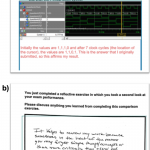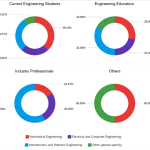Simulation-Based Reflection in a Digital Circuits Course
Abstract
A unique method for promoting reflection among engineering students was used in the present study involving a digital circuits course. The method combined computer-based simulation for digital circuit design with reflective-thought prompts after a midterm exam for post-exam analysis and reflection. This method was first implemented in a microelectronics course using the SPICE simulator, and lessons learned from the initial implementation were applied to the digital circuits course. These lessons learned included the need to scaffold students in the use of the simulation tool for reflection, the need to balance frequency of reflection with student workload and fatigue, and the need for question prompts that voluntarily elicit broad thought after a milestone event such as a midterm exam (versus a quiz).

